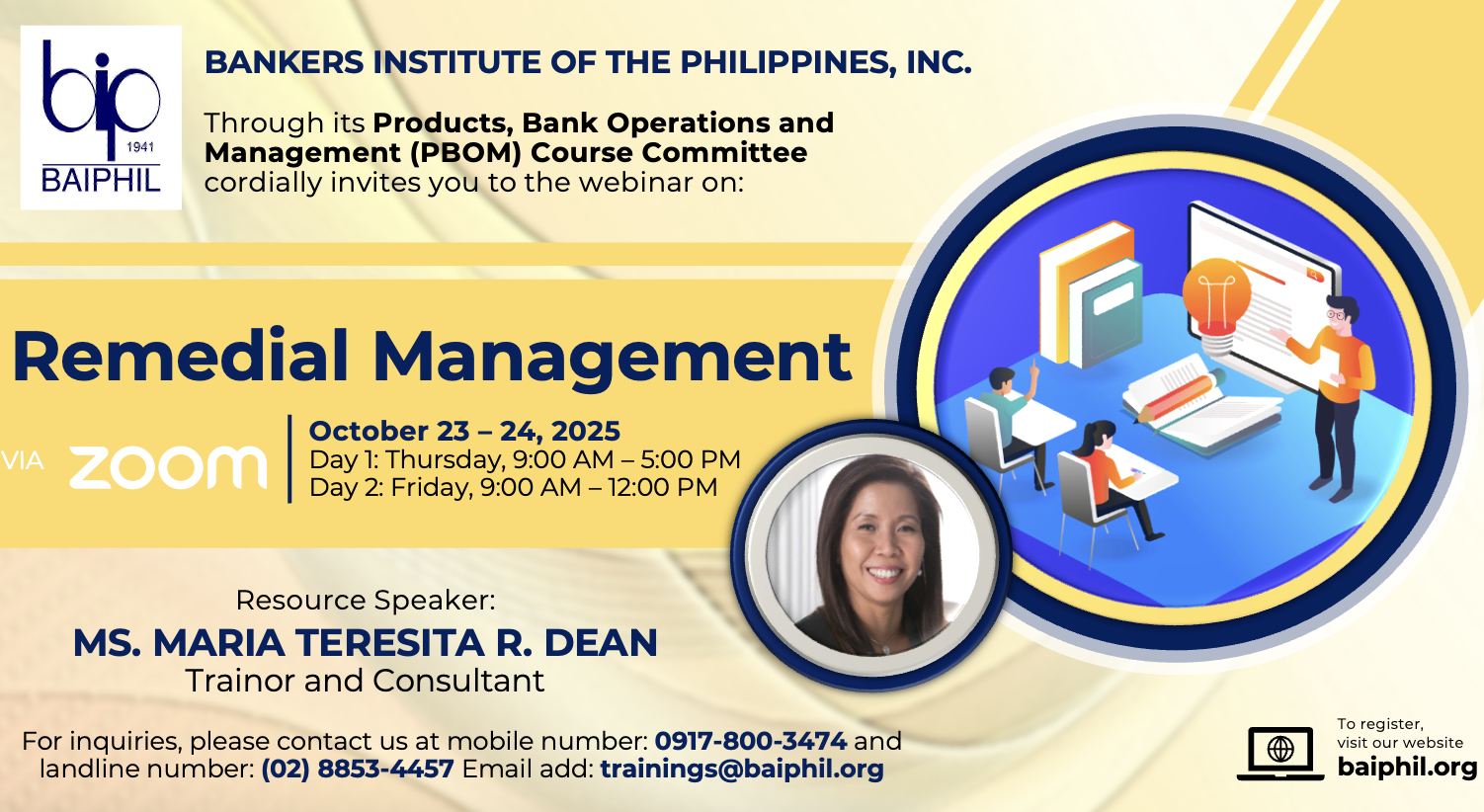Description
Module Name: REM M1 Remedial Management And Early Detection
Description: The Remedial Management and Early Detection module of the Remedial Management Series is focused on providing the participant on knowledge on early signs of credit deterioration amongst borrowers. While a borrower may start out as a good loan account, it may be possible that borrower may encounter problems moving forward – this is where early warning signs may be detected. After seeing these, there are certain steps that an Account Officer may take to address these. Remedial management should be a mindset for all bankers, watching over all loan accounts, directly or indirectly.
Objective: By the end of this course, one will be able to:
- Assess the key drivers of credit deterioration
- Understand the costs of problem loans to the Bank
- Identify early warning signs and respond to them before the client defaults
Outline: As follows:
- Problem Loans: Can They Be Prevented?
- Problem Loans Do Happen
- Key Drivers Of Credit Deterioration
- Remedial Management: Definition And Significance
- Early Detection: Definition And Significance
- Early Warning Signs
- Sending Of Demand Letters
Participants: Account Officers, Account Associates, Credit Officers, Credit Analysts, Credit Policy Officers, Credit Review Officers, Branch Managers, Branch Officers, Branch Associates, Operations Officers, Internal Auditors
Module Name: REM M2 Remedial Analysis And Strategies
Description: The Remedial Analysis and Strategies module of the Remedial Management Series is focused on teaching the participant on how to analyze and understand the root cause of bad loans, whether these be temporary or long-term problems. Thereafter, the participant should be able to use one or more remedial management techniques for these bad loan accounts. Remedial management should be a mindset for all bankers, watching over all loan accounts, directly or indirectly.
Objective: By the end of this course, one will be able to:
- Determine the root cause of the borrower’s problem and thereby properly address this with the right remedial strategy
- Analyze the various aspects of a borrower’s situation to identify the weak link causing the problem
- Identify borrowers in financial distress and assess their viability
- Apply dynamic remedial management techniques in response to defaulting clients
Outline: As follows:
- Remedial Analysis
- Immediate Internal Actions
- Assessment Of Borrower’s Situation
- Remedial Strategies
- Collection Of Payment
- Negotiated Settlement
- Debt Work-Out
- Rehabilitation / Liquidation
- Litigation
- Foreclosure
- Repossession
- Collection Case
- Weighing Remedial Options
- Referral For Legal Action
Participants: Account Officers, Account Associates, Credit Officers, Credit Analysts, Credit Policy Officers, Credit Review Officers, Branch Managers, Branch Officers, Branch Associates, Operations Officers, Internal Auditors
Resource Speaker:
Ms. Maria Teresita R. Dean
Trainor and Consultant
Trainor and is a highly-experienced senior management professional with over thirty-nine years of credit and collections management, risk management, account management and distressed assets management background in both domestic and international markets.
Schedule:
October 23-24, 2025 (Thursday-Friday)
Day 1: 9:00 AM – 5:00 PM
Day 2: 9:00 AM – 12:00 PM
Training Fee per Participant:
Member Institution – Php6,720.00
Non-Member Institution – Php8,960.00
*VAT inclusive

